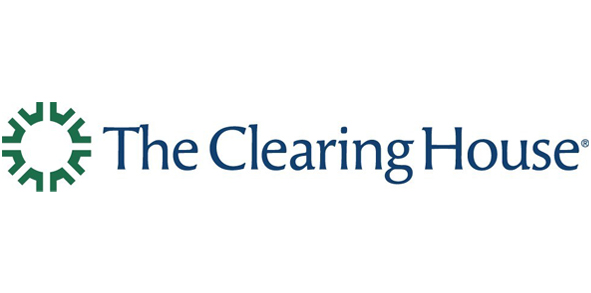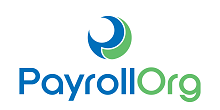Why HR Leaders Shouldn’t Fear Earned Wage Access

--SPONSORED CONTENT--
Americans want their earnings faster and more frequently. Most Americans get paid on biweekly cycles that leave them in a lurch when faced with emergency repairs, unexpected medical costs, or other expenses. One in five families has less than two weeks of liquid savings and often falls short between pay cycles. In these challenging times, struggling Americans have limited options to address short-term cash needs, and none are ideal. Let’s look at the options consumers have with the status quo:
- Payday loans range from $100 to $1,000 and are repaid in a single payment at the end of two- or four-week terms. Because of the shorter loan cycle, most payday loans either roll over or renew within 14 days, prolonging the debt cycle and leading to debt traps. Consumers spent an estimated $4.6 billion on payday loans in 2018.
- People in a cash crunch often pawn items in exchange for a loan, which typically needs to be repaid in 30 days. Loan amounts are usually from $75 to $100, with interest rates varying from state to state.
- Consumers may be able to overdraw their accounts but often are charged an overdraft fee, typically around $35 per transaction. Consumers spent an estimated $12.4 billion on overdraft fees in 2020—although that number, thankfully, is expected to decline thanks to many banks and credit unions having announced in 2022 that they are eliminating overdraft fees.
Earned Wage Access (EWA) is an alternative to high-cost, debt-triggering financial products. EWA allows workers access to earned wages before paydays or between pay cycles. Let’s dive into how EWA works.
Business Models
Employer or payroll integrated. On-demand pay providers work with employers and payroll processors to provide employees with earned wages. By integrating with payroll, providers gain timesheet data to confirm hours worked and wages earned for early wage disbursement. In this model, the employer is advancing payment to its employees ahead of a regular pay date. Employers can cap the frequency and size of advances per pay period, which are repaid by the employee to the employer through deductions from the employee’s next paycheck. If there are fees for the service, the employer, the employee, or sometimes both cover them. Depending on the method of disbursement, providers may not charge consumers a fee, or employers may choose to subsidize them.
Direct-to-consumer (D2C). Consumers can benefit from instant pay by subscribing directly to an EWA provider that monitors their cash flow and paydays to determine earned wages. Consumers can request an advance from the EWA provider and receive their wages through their preferred method of disbursement, and then repay the provider most commonly through an automatic deduction from their next paycheck. Consumers are typically charged either a monthly subscription fee, a transaction fee, a voluntary fee amount, or a hybrid of all three. Subscription fees can range from $1 to $9.99 per month, while transaction fees typically cost $1 to $5.
Payments Rails
Direct deposit. Earned wages are directly deposited to consumer bank accounts via the ACH network, generally in 1-3 days, or instantly with real-time payments over the RTP® network. Banks typically don’t charge consumers fees to receive transactions, so employers and employees may gravitate towards this method, especially since it offers consumers flexibility and choice as well as safety and security.
Prepaid card. Earned wages are credited to a prepaid or reloadable card issued by the employer or payroll processor. Consumers can make direct purchases, but there may be fees associated with it that the consumer, the employer, or both must cover. It can take up to 48 hours to top up a prepaid card.
How Does EWA Fit into the Traditional Payroll Mechanism?
One misconception HR leaders may have about EWA is the potential to complicate the traditional payroll system. The good news is that EWA does not impact the withholdings process—including tax and other deductions—that payroll providers use with their customers (the employer), as EWA is most commonly provided directly to the employee, and the employer’s payroll cycle isn’t disrupted. For the employer, the previously accessed earned wages are treated as a deduction from the employee’s paycheck.
Is EWA a Loan, and Do Laws Governing Lending Apply to EWA Programs?
This is an evolving area, and employers, as well as EWA providers, need to understand how the design of their products might affect the answer to these questions. For example, a late 2020 advisory opinion by the Consumer Financial Protection Bureau (CFPB) stated, among several other conditions, that employer-based EWA programs would not be considered the extension of credit for purposes of the Truth in Lending Act and its Regulation Z if workers do not pay to access EWA funds. According to the CFPB, it has received requests for clarification regarding its advisory opinion on “earned wage access” products and plans to issue further guidance to provide greater clarity concerning the application of the definition of “credit” under the Truth in Lending Act and Regulation Z.
As EWA’s popularity grows, states are also considering how their laws apply and whether additional legislation or regulation is needed. For example, in response to a request from EWA provider FlexWage for an interpretive opinion as to the application of certain California licensing laws, the California Department of Financial Protection and Innovation concluded that the specific FlexWage product described in the request was not a loan. It reached this conclusion in large part because FlexWage’s employer partners and not FlexWage are providing the funds and the advanced amounts do not exceed the wages already earned. The Department also considered the fee structure. While the opinion is instructive, it is limited to the specific facts presented for consideration.
All in all, earned wage access is a win for employers and employees because it gives workers more flexibility and control of their finances. HR professionals interested in attracting and retaining talent should differentiate themselves with a flexible program for wage disbursement.
Elena Whisler is Senior Vice President at The Clearing House.
